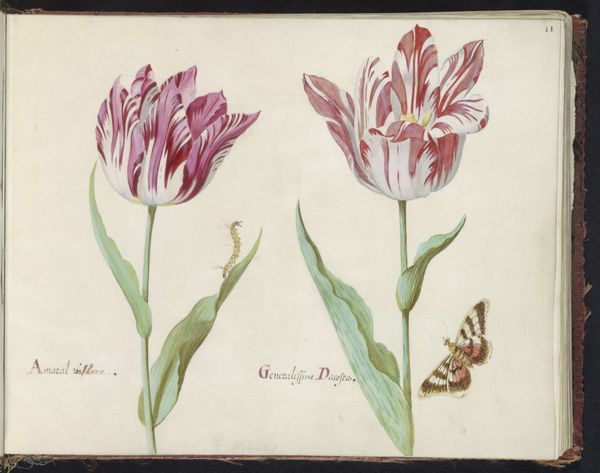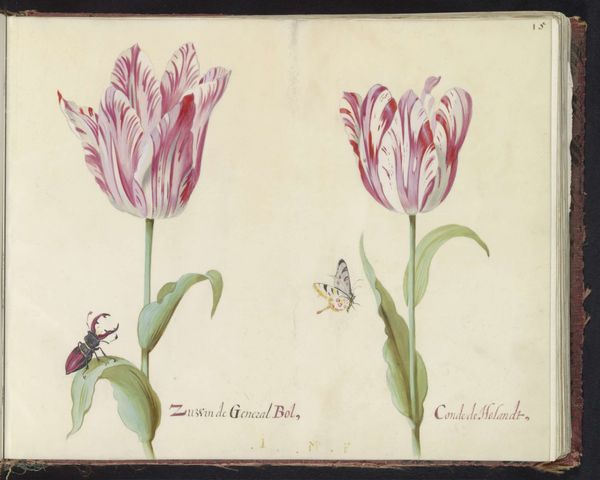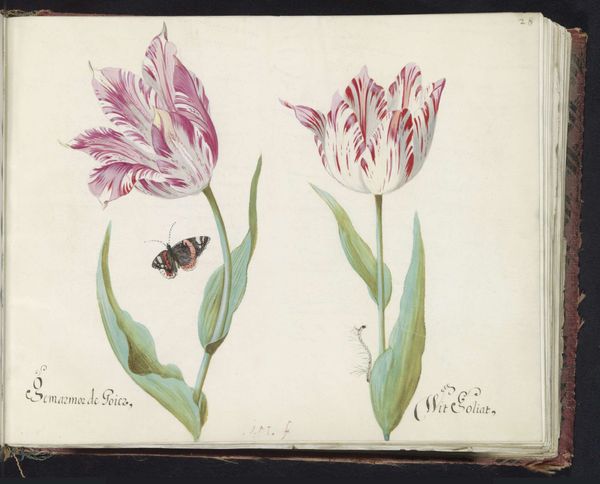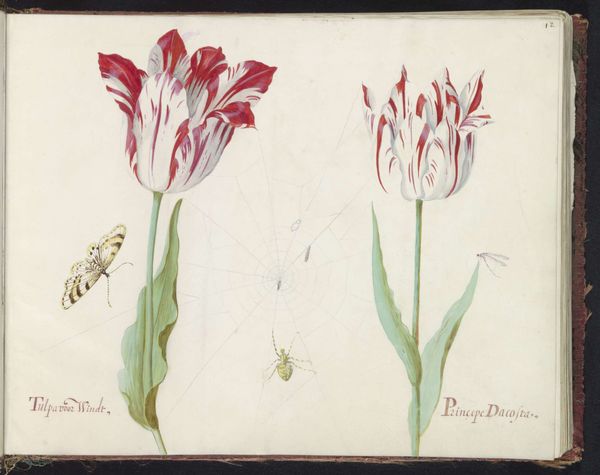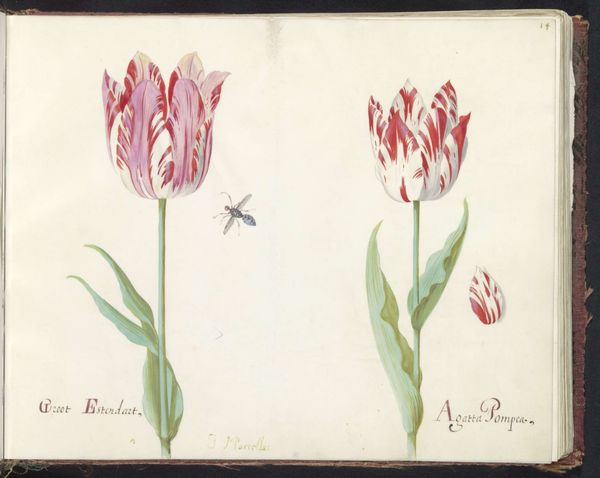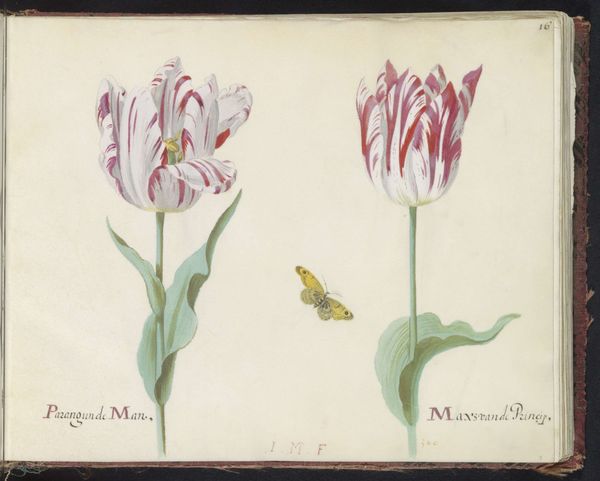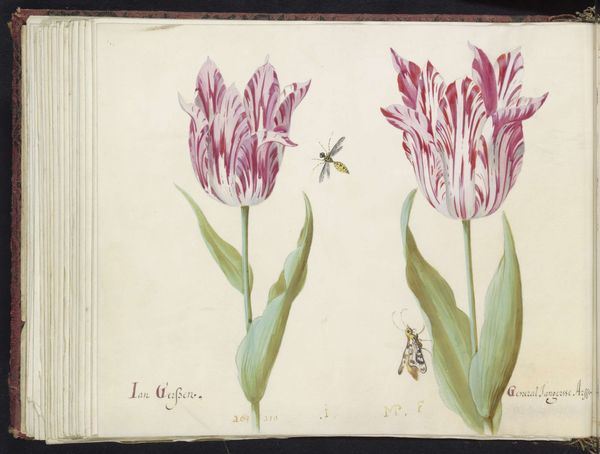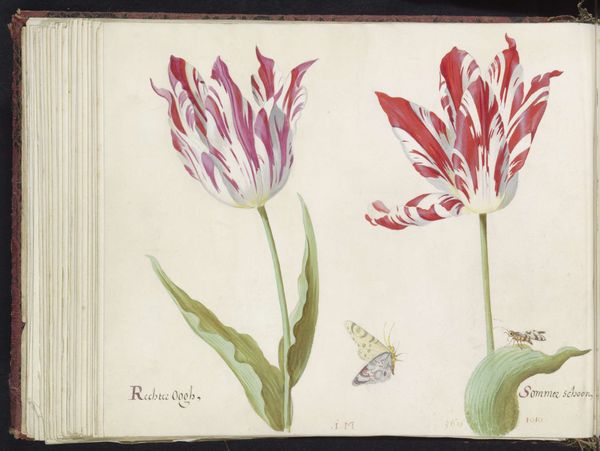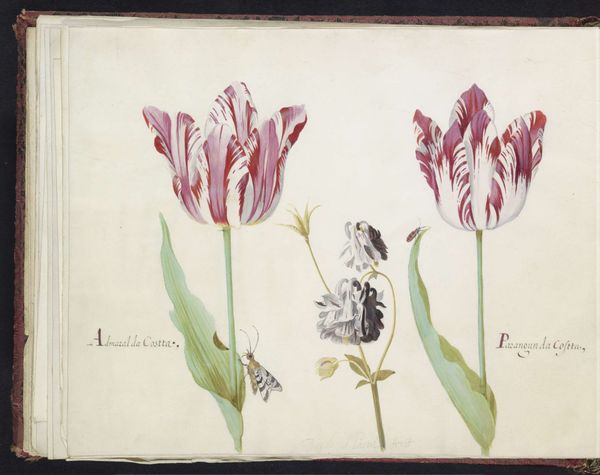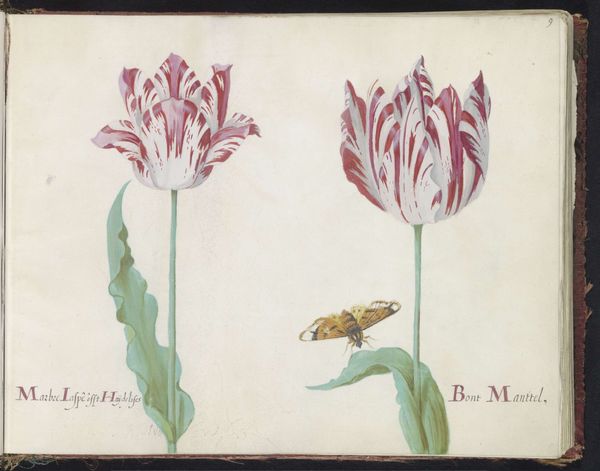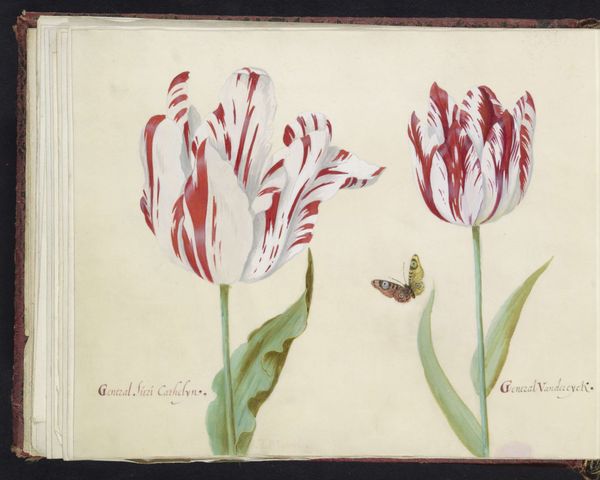
painting, watercolor
#
water colours
#
dutch-golden-age
#
painting
#
watercolor
#
watercolour illustration
#
botanical art
#
watercolor
#
realism
Dimensions: height 265 mm, width 335 mm
Copyright: Rijks Museum: Open Domain
Curator: Here we have Jacob Marrel's "Three Tulips with a Peacock Butterfly," dating from 1637. This botanical study is rendered in watercolor and currently resides in the Rijksmuseum. Editor: My immediate impression is one of delicate precision. The fine lines create these crisp tulip petals that feel almost sculptural against the soft washes of the leaves. Curator: The realism in Marrel's technique is extraordinary, but let’s not overlook the context. This work appears during the height of Tulip Mania in the Netherlands. Editor: So, we're looking at more than just flowers, but a symbol laden with social weight, with speculation, social upheaval… These particular tulips, so carefully documented, would have been prized possessions at the time. Look at how the striations draw your eye right to their patterned surfaces. Curator: Precisely! They became emblems of status, wealth, and even national pride. It’s worth considering how artists were incentivized to capitalize on such cultural obsessions to ensure sales. Editor: Indeed! Yet there's also a formal dialogue created by their different sizes. We have one large bloom and its offset smaller bloom along the left side, as balanced against a very distinct second specimen on the right… with the very life-like painted peacock butterfly at its stem. Curator: What do you make of its inclusion of an insect, what appears to be a diurnal peacock butterfly, into this portrait? Editor: The butterfly enhances that feeling of transience. It may be the butterfly just brings in another set of lines with which to engage and activate these two halves into visual symmetry and balance. Curator: It certainly brings a fresh perspective. When we consider how Dutch Golden Age painting helped define new understandings of domestic life, nature, and civic identity, this tulip study serves as a brilliant example. Editor: It seems that through Marrel’s skillful eye, the botanical becomes a kind of formal study, allowing him to emphasize pattern and subtle variation. Curator: I'd agree that Marrel's skill has afforded him not just wealth but longevity for this enduring work of art and material culture.
Comments
No comments
Be the first to comment and join the conversation on the ultimate creative platform.
